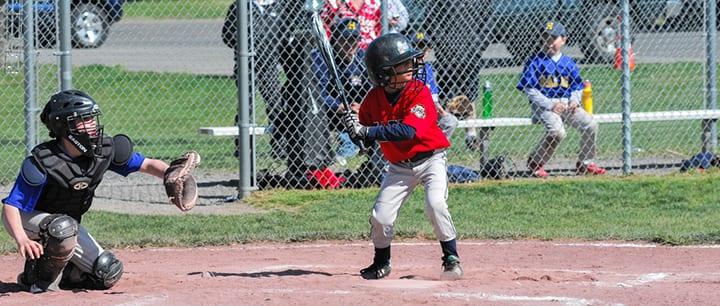 When your child needs a little extra help with math, but doesn’t seem interested in flashcards, worksheets, or other methods of learning, you need to be a little creative. If he or she enjoys sports, why not take the opportunity to introduce some math practice games while watching or playing the sport?
When your child needs a little extra help with math, but doesn’t seem interested in flashcards, worksheets, or other methods of learning, you need to be a little creative. If he or she enjoys sports, why not take the opportunity to introduce some math practice games while watching or playing the sport?
Any sport can be turned into a math practice game – you just need to find a way to sneak it in without letting your child know you’re trying to promote some math time. Below are some ideas to get you started.
Baseball
Since baseball is full of math already, from batting averages to ERAs, you won’t have to try too hard to find ways to incorporate math practice games into watching baseball. The hard part might be finding a way to turn an existing stat into a math problem without giving away the answer. If possible, try to get a jump on the stats by asking your child what the batting average is going to be for a specific hitter by giving their at-bats and hits before it shows up on the screen. Dividing the hits by at-bats will give the correct answer.
If you can’t ask a math question before all the stats are shown for a player, try framing it as a hypothetical situation. Ask your child to estimate the player’s batting average if they get a hit for the next two at-bats. This way they can’t just reference the batting average stat for the answer, and also have to perform some addition to find the new at-bat statistic and number of hits.
Of course, there are many other math practice games in baseball, too. Ask your child to tell you how many bases a player has touched in total if they hit a certain number of singles, doubles, and triples. Or, how many bases a player would have to steal for their stolen bases stat to equal their home run stat?
Football
Another great sport to find math practice games in is football. You can ask questions about yardage, catches, and scoring quite easily. For example, ask your child how many points the home team would have if they scored three touchdowns, with two extra points and a failed two-point conversion. Or how many yards the leading rusher has if he’s gone for three first downs and had two more carries for five yards each.
You can also introduce some division into the mix if you’d like. Ask how many yards per catch or carry their favorite player has, and as long as you have the number of yards and the number of touches for the player, this is a basic division problem. Ask how many touchdowns per game the quarterback has, again as long as you know how many games the player has been in this season as well as the total number of TDs.
Basketball
With basketball, you can find math practice games in many situations. Ask your child to tell you how many more points, rebounds, and assists his or her favorite player will need to get to a triple-double. Or if you have the minutes played and total points handy for the player, ask your child to estimate the number of points per minute the player has scored.
If your child is playing basketball, ask him or her to estimate their own stats. Points-per-game, average number of rebounds, and assists can all become a math problem if your child has the totals in his or her head. Or ask about the last game he or she played, and how many points the team won or lost by, to create a basic double-digit subtraction problem.
Racing
Keep in mind that ball-based sports aren’t the only ones that can involve math practice games! If your child enjoys racing, for example, you could ask about the average speed over the course of the entire race. As long as you know the distance and time, your child can use division to estimate the winner’s average pace.
If your child enjoys competing in races, you can give some other math practice games a try. Ask for the time difference between him or her and the next closest competitor, or to anyone else in the race for that matter. You can also ask about what his or her time would be if the distance was doubled, or tripled, or any multiple that you want to focus on.
Any sport can be turned into a math practice game if you get a little creative. Just find two statistics, and ask about the relationship between them, and you’ve created a great way to practice some math with your child!
Photo by Ryan Scott
Suzy S.

